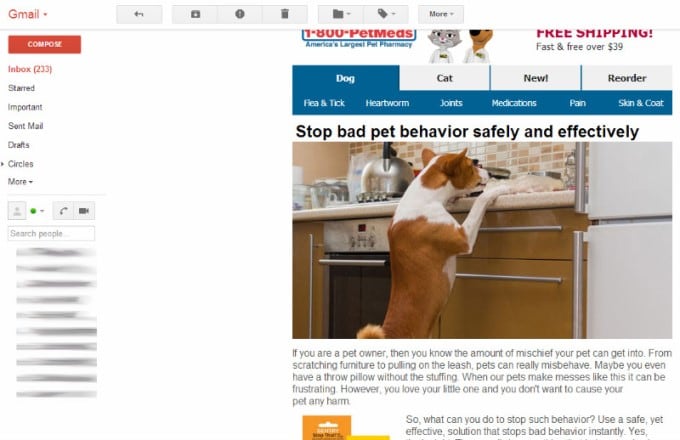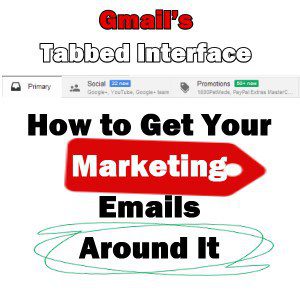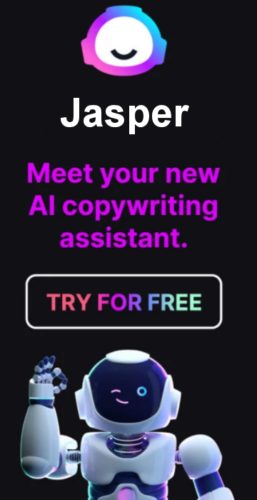Marketers have spun out some rather colorful nicknames for Gmail's tabbed interface since its announcement in June of 2013. It’s been called everything from the “death of email marketing” and “email-marketing apocalypse” to “the demise of email marketing.”
lMarketers from companies of all kinds started having simultaneous asthma attacks, and quickly sent subscribers requests and directions to change their email settings, to prevent their emails from landing in the promotions inbox – that evil, devious new thing Google created for the bane of all marketers.
Overreact, much, guys?
While Gmail's tabbed interface certainly is different, it is not the mass murderer of email marketing. Here’s a few reasons why:
- Gmail is also sending its own promotional emails to the same inbox, along with the former panel ads which are now also sent as emails under Promotions. Does anyone seriously think Google would do something detrimental to their own marketing and advertising efforts?
- It very well may be a good thing for marketing emails with quality content – emphasis on quality. Now Gmail users can go to their promotions tabs when it is convenient for them and when they are open to advertised products and services instead of being annoyed by the competition – or even intrusiveness – juxtaposed by emails from friends, work and other personal emails.
- In the end, it doesn't matter what the open rates are. Since Gmail users are now able to view marketing emails separately, at their convenience, when they are in the mood to shop or be marketed to, it very well could result in better conversion rates. Many companies and studies have revealed that conversion rates have in fact already gone up with the new tabbed interface.
However, if you are determined to get your emails into that precious primary inbox, there are some Gmail marketing efforts you can make to help yourself get there. First, though, check to see if the tabs have affected your open and conversion rates – just run some segmented reports for Gmail subscribers only. Then run those same reports again, starting from June 2013.
"MailChimp analyzed the Open Rates of email campaigns sent to Gmail addresses before and after the launch of tabs and found a decrease of about 1%. That’s not the apocalypse many were expecting – but again, we should be more interested in ROI than Opens." |
My guess is that most email marketers who don’t spam won’t see many changes for the worse. Emails like the one shown here from my own promotions inbox will never make it to anyone’s primary inbox. They use phony, pseudo-personalized content to pitch yet another product.

In the example above, the pet supplies company draws consumers to open the email with a title that implies there will be advice about bad pet behavior. Upon reading, however, all it really says is “Don’t you hate when this happens? Buy this!” Companies who deceive or buy their subscribers will not make it to the primary inbox.
How to Rewrite and Reformat Marketing Emails for the Gmail Primary Inbox
If you can honestly say you have a quality email-marketing campaign and are still showing a lower conversion-email rate, all is not lost. Here are some pointers.
Less is more. Cut out all photos and graphics and use only text. These things are like neon flashing signs to Gmail that your email is a promotional one.
Use no more than a single link in the entire email. It may force you to be selective about what link you want to include, but multiple links are another heads-up to Gmail that your content might be promotional.
This really should go without saying, but don’t be spammy. Not just in the title, but in the entirety of your email marketing. This includes headlines such as “WOULD YOU LIKE TO WIN A MILLION DOLLARS?” or sending emails every single day. As a rule, you should email subscribers no more than once a week. Just because people sign up to receive emails from you doesn't mean they want to know about all 27 editions of the same product or that you have a new accountant.
Address recipients by name. Why so many companies fail to do this totally confounds me. It doesn't take a neurosurgeon to get that people are much more likely to read emails personally addressed to them than emails addressed “Dear Sir/Madam” or “Dear Valued Customer” or “Dear Reader.” If your email-subscription list is enormous, you can use an email-marketing service like MaiChimp or AWeber. If you don’t address your subscribers by name in your email, it seems as though you really don’t care if they read it or not.
Write to your subscribers/email recipients personally, as if you were talking to a friend. Not like a distant acquaintance, a customer or a potential sale – as a friend. Be sincere.
Don’t use an RSS or “batch and blast” email campaign. If you really want better open rates, you have to personally type out the email.
Don’t insert customized formatting templates or use columns. Just use normal letter format.
Finally, but most importantly, provide useful, relevant content. If you simply try to sell something in every email you send out, you’ll eventually land right back in the promotional tab. That makes it likely that most of your subscribers may stop reading your emails.
Send your email subscribers pearls of content. Build relationships with the emails you send, just like you try to do in social media. If you sell holistic products, send them weekly how-tos, like how to make your own soap or a home remedy for colds. If you run an extermination and pest-control business, provide real advice about keeping mice out in the winter or using mosquito morgue nets in the summer.
If you write a blog, then you have to provide your email subscribers with something you don’t already provide there. Don’t send content you've already written or addressed, and don’t send repeat emails every day.
I personally don’t think that Gmail's tabbed interface is the devil of email marketing, and for quality-content email-marketing campaigns, I believe the promotions tab will benefit them. Remember, email open rates are not what matters most – the conversion rates are.

About the Author: Adrienne Erin
Adrienne is a freelance writer who loves learning new things about internet and social media marketing. Check out her personal blog, Pongra



